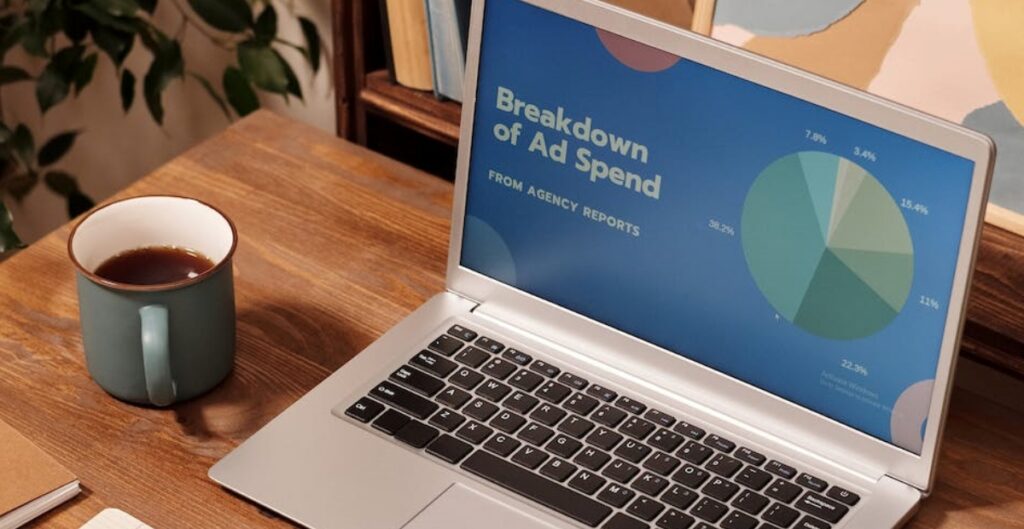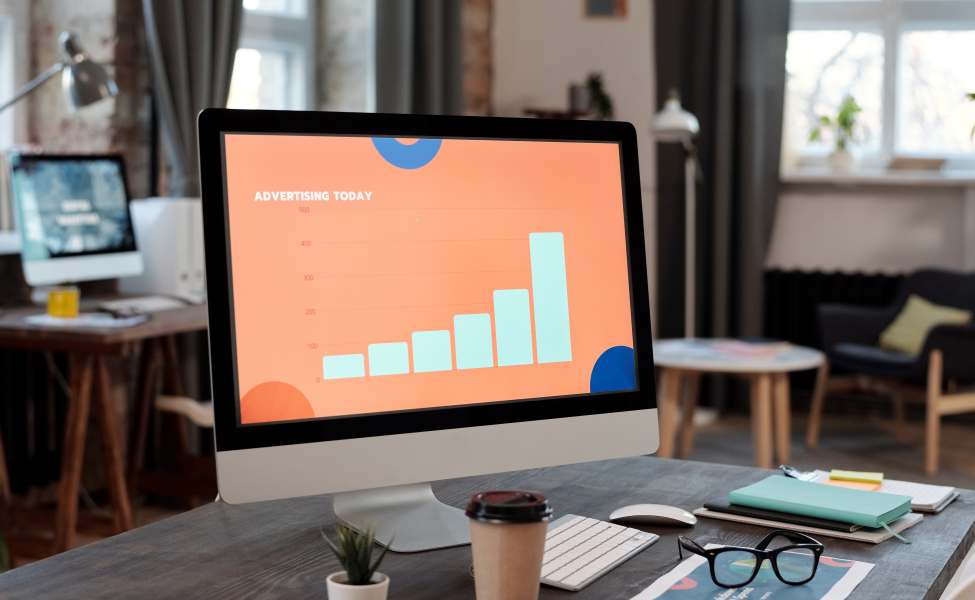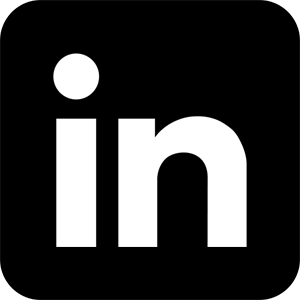Paid Ads: What is It and Why is It Important?
Paid Ads: What is It and Why is It Important?

Share This Article

Paid advertising, also known as pay-per-click (PPC) advertising, is a popular digital marketing strategy that allows businesses to place their ads on search engine results pages (SERPs) and other websites. In this way, businesses can attract more customers to their websites and increase their revenue.
The way paid ads work is simple: businesses bid on specific keywords related to their products or services, and their ads are displayed to users who search for those keywords. When a user clicks on the ad, the business is charged a fee, hence the name pay-per-click. This means that businesses only pay for the ads that actually generate clicks, making it a cost-effective way to reach potential customers.
Paid ad is essential for any business looking to succeed in today’s competitive online marketplace. With the rise of online shopping and e-commerce, businesses need to have a strong online presence to attract customers and increase sales. Paid ads can help businesses achieve this by placing their products or services in front of users who are actively searching for them, making it more likely that they will click through to the website and make a purchase.
So, if you’re ready to take your digital marketing game to the next level, read on to learn everything you need to know more about paid ads!
Success Story of AiSensum: How Persona Based Marketing Increased Uniqlo Sales by 3.6X
What is Paid Ad?

Paid ad is ad that digital network providers offer, and for which you must pay. There are several types of campaigns available for paid ads, both on Google and on social media, namely:
- Pay-per-click
- Pay-per-install
- Pay-per-view
- Pay-per-download
- Pay-per-acquisition
- Display ads
- Video ads
The most common method of paid ads is pay-per-click (PPC). In this model, you pay the provider every time someone clicks or sees your ad. The better your ad campaign, the higher your click-through rate (CTR) will be, and the more likely you are to acquire new leads or customers.
Why are Paid Ads Important?
To run an effective advertising campaign, it’s important to utilize all available channels. While paid ads may seem expensive due to factors such as keyword competition and bidding by competitors, they offer an effective way to widely promote your brand and products to the public. Ultimately, though, the key message of your brand remains the most important factor.
#1 Paid Ads Deliver Better Results than Organic Reach
Paid ads enable you to achieve your brand goals and generate qualified leads more quickly than organic reach. If your website doesn’t rank on the first page of search engine results, paid ads can help you reach a larger, more relevant audience for specific keywords.
#2 Paid Ads Are Affordable and Scalable
With paid ads, you can reach a wide audience and control costs based on your campaign objectives. For example, if your goal is website traffic, you will be charged per click, while brand awareness campaigns are typically charged per 1,000 impressions. Paid ads allow you to track spending across multiple platforms and set daily and total campaign budgets to suit your needs.
#3 Customized Targeting
Paid ads provide highly targeted reach, enabling you to connect with audiences who match your buyer persona and have an interest in your brand. By analyzing data from all your digital platforms, including demographics, interests, location, job title, and keywords, you can create campaigns that generate qualified leads and increase conversions. You can also use retargeting campaigns to engage potential customers who have shown an interest in your products or services.
#4 Disseminate Messages Across Platforms
Most social media platforms now offer paid advertising options, including Google, Facebook, Instagram, Twitter, LinkedIn, YouTube, and Reddit. Paid ads provide flexibility to customize your brand message and key themes while consistently testing what works and what doesn’t. These platforms have monetized their data to make advertising easier and more efficient for businesses.
Overall, paid advertising provides several benefits, including better results than organic reach, affordability, customized targeting, and the ability to disseminate messages across multiple platforms.
Success Story of AiSensum: How AI Generated Audience can Increase This Is April Sales 7.1X
Paid Ads Channels
There are various online advertising channels available, but let’s take a look at the primary ones:
1. Facebook Ads & Instagram Ads
Facebook Ads and Instagram Ads are two of the most popular paid article channels available to businesses and content creators. Facebook Ads allows advertisers to create and run ads across Facebook’s family of apps and websites, while Instagram Ads allows businesses to advertise specifically on the Instagram platform.
Both platforms offer a range of ad formats, such as image ads, video ads, and carousel ads, as well as sophisticated targeting options to reach specific audiences based on demographics, interests, behaviors, and more.
Similar to other platforms, Facebook & Instagram Ads mainly operates on a Pay-Per-Click model based on real-time auctions.
2. Google Ads
Google Ads, formerly known as AdWords, is the most prominent and oldest advertising platform on the internet. With its advanced system, you can advertise on Google search, YouTube, and millions of websites and apps that are part of its network. Utilizing machine learning and user data, Google matches keywords and users with your ads, ensuring better reach.
Google Ads mostly operates on a Pay-Per-Click model based on your bid amount and quality score, which is determined by the effectiveness of your ads and landing pages.
3. Programmatic Ads
Programmatic advertising is a highly sophisticated form of digital advertising that leverages technology to automate and optimize the process of buying and selling ad inventory. Unlike traditional advertising methods that rely on manual negotiations and purchases, programmatic advertising relies on machine learning algorithms and real-time bidding (RTB) to match advertisers with publishers and display relevant ads to specific audiences.
Programmatic ads can use a variety of pricing models, including cost-per-impression (CPM), cost-per-click (CPC), and cost-per-acquisition (CPA). While pay-per-click (PPC) is a common pricing model in programmatic advertising, it is not the only one available.
4. LinkedIn Ads
LinkedIn Ads is a paid advertising platform that allows businesses to reach a highly targeted audience of professionals on the LinkedIn social network. With LinkedIn Ads, businesses can create and run ads that appear in users’ feeds, inboxes, and on their profile pages.
LinkedIn Ads can be an effective paid advertising channel for businesses looking to reach a professional audience, generate leads, and increase brand awareness. It’s valuable for B2B business. You can target users based on their job title, industry, company, interests, and demographic data. LinkedIn Ads mainly uses a Pay-Per-Click model.
5. Twitter Ads
Twitter Ads provides advertising capabilities within its platform. You can target people based on keywords, conversations, interests, and their engagement with your tweets. Twitter Ads also operate on an auction model with Pay-Per-Click charges.
Twitter Ads can be a valuable addition to a business’s marketing strategy, especially for those looking to reach a younger demographic or those in the news or entertainment industries. By leveraging the platform’s targeting capabilities and ad formats, businesses can reach their desired audience with relevant messages and increase the likelihood of engagement and conversion.
6. TikTok Ads
TikTok Ads offers a range of ad formats, including in-feed ads, brand takeovers, and hashtag challenges, to help advertisers reach their target audience and achieve their marketing goals. Advertisers can also target specific audiences based on demographics, interests, behaviors, and more.
TikTok Ads provides detailed analytics and insights to help advertisers measure the performance of their ads and optimize their campaigns for better results. Overall, TikTok Ads can be an effective paid article channel for businesses and content creators looking to reach a younger audience on a highly engaging social media platform. TikTok Ads also offers pay-per-click (PPC) pricing.
Related Article: The Ways to Optimize Social Media Ads to Grow your Business
How to Develop Your Paid Ads Strategy
There’s a lot that goes into PPC advertising and you shouldn’t start your campaigns without having a strategy in place, else you could end up wasting a lot of money!
Identify Your Goals
To start any marketing initiative, it is important to establish your goals. It is essential to determine who your target audience is and what exactly you want to achieve from your campaign. Defining your objectives will enable you to determine the end result and what you want your audience to do.
Various campaign and ad types, as well as platforms, may be required for different goals and audiences. Typically, platforms offer specific campaigns to align with particular goals, allowing you to start your campaign with a goal and select the relevant options.
Goals may be classified based on the buyer’s journey, as individuals may require different things depending on the stage they are at. During the Awareness stage, the goal is to make more people aware of your products or services. Impressions (the number of people who saw your ads) and clicks (the number of people who clicked through to learn more) are typically used to measure this. Engagement metrics such as likes or video views can also be used.
The Consideration stage is when an individual has identified their problem or need and is considering the options to solve or fulfill it. To measure this, clicks to your website and the actions taken on your site, such as filling out a form to download a guide or navigating to other pages to learn more, should be analyzed.
The Decision stage is when an individual has determined how to solve their problem or fulfill their need and is searching for the organization that can do this for them. Conversions, such as contacting or purchasing from your company, are typically used to measure success during this stage.
Know Your Audience
It’s great to know your goal but it’s even better to know who you’re targeting. You should do some research to understand who your potential customers are. This can be done by creating personas which are semi-fictional characters that correspond to your ideal customer. You define them by understanding who they are as well as the challenges and pain points that will trigger them to buy products or services like yours.
Knowing your audience is essential to build efficient ads. It will help you understand which platforms to advertise on and which to avoid. It will also help you choose the best targeting options to reach them and you’ll be able to craft great ads that will appeal to them.
Calculate Your Budget
Once you have determined your goals and identified your audience, it’s important to establish your budget. While you may already have a specific budget in place, it’s essential to decide where to allocate your funds. Most businesses don’t have unlimited financial resources, so it’s important to maximize your budget for optimal return on investment.
One of the biggest mistakes businesses make is spreading their budget too thin across various platforms or campaigns. This approach can limit their budget and result in poor outcomes. It’s best to focus on one platform or type of targeting at a time and fully commit to it to maximize performance. If the results are not satisfactory, you can always move on to the next approach. Marketing is all about trial and error.
Several tools are available to estimate the cost per click (CPC) and search volumes, allowing you to determine how much advertising on specific terms might cost. Advertising platforms also provide budget estimates when setting up your campaign and choosing targeting options. Although these estimates are usually rough, it’s essential to pay attention to them as they provide a broad estimate of what you can expect. However, the exact cost of your advertising campaign will only be known once you start advertising.
Read More: How to Create an Effective Ad Campaign in 2023: Strategies and Examples
Above is a comprehensive explanation of paid advertising. If your business is running ads but you are not satisfied with the performance, contact AiSensum now to achieve better conversion and sales results.
Signup to our Newsletter
Check out These Related Blog Posts
Check out These Related Blog Posts

Ready For Your Giant Leap?
Enhance your marketing's effectiveness, cost-efficiency, and results with AI now! Contact us today and thank us later!

Ready For Your Giant Leap?
Enhance your marketing's effectiveness, cost-efficiency, and results with AI now! Contact us today and thank us later!






